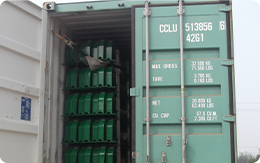 Afrikaans
Afrikaans  Albanian
Albanian  Amharic
Amharic  Arabic
Arabic  Armenian
Armenian  Azerbaijani
Azerbaijani  Basque
Basque  Belarusian
Belarusian  Bengali
Bengali  Bosnian
Bosnian  Bulgarian
Bulgarian  Catalan
Catalan  Cebuano
Cebuano  Corsican
Corsican  Croatian
Croatian  Czech
Czech  Danish
Danish  Dutch
Dutch  English
English  Esperanto
Esperanto  Estonian
Estonian  Finnish
Finnish  French
French  Frisian
Frisian  Galician
Galician  Georgian
Georgian  German
German  Greek
Greek  Gujarati
Gujarati  Haitian Creole
Haitian Creole  hausa
hausa  hawaiian
hawaiian  Hebrew
Hebrew  Hindi
Hindi  Miao
Miao  Hungarian
Hungarian  Icelandic
Icelandic  igbo
igbo  Indonesian
Indonesian  irish
irish  Italian
Italian  Japanese
Japanese  Javanese
Javanese  Kannada
Kannada  kazakh
kazakh  Khmer
Khmer  Rwandese
Rwandese  Korean
Korean  Kurdish
Kurdish  Kyrgyz
Kyrgyz  Lao
Lao  Latin
Latin  Latvian
Latvian  Lithuanian
Lithuanian  Luxembourgish
Luxembourgish  Macedonian
Macedonian  Malgashi
Malgashi  Malay
Malay  Malayalam
Malayalam  Maltese
Maltese  Maori
Maori  Marathi
Marathi  Mongolian
Mongolian  Myanmar
Myanmar  Nepali
Nepali  Norwegian
Norwegian  Norwegian
Norwegian  Occitan
Occitan  Pashto
Pashto  Persian
Persian  Polish
Polish  Portuguese
Portuguese  Punjabi
Punjabi  Romanian
Romanian  Russian
Russian  Samoan
Samoan  Scottish Gaelic
Scottish Gaelic  Serbian
Serbian  Sesotho
Sesotho  Shona
Shona  Sindhi
Sindhi  Sinhala
Sinhala  Slovak
Slovak  Slovenian
Slovenian  Somali
Somali  Spanish
Spanish  Sundanese
Sundanese  Swahili
Swahili  Swedish
Swedish  Tagalog
Tagalog  Tajik
Tajik  Tamil
Tamil  Tatar
Tatar  Telugu
Telugu  Thai
Thai  Turkish
Turkish  Turkmen
Turkmen  Ukrainian
Ukrainian  Urdu
Urdu  Uighur
Uighur  Uzbek
Uzbek  Vietnamese
Vietnamese  Welsh
Welsh  Bantu
Bantu  Yiddish
Yiddish  Yoruba
Yoruba  Zulu
Zulu Durable Plastic Components for Efficient Conveyor Systems and Material Handling Solutions
The Rising Importance of Plastic Conveyor Parts in Modern Industries
In today's fast-paced manufacturing and logistics environments, the choice of conveyor parts plays a pivotal role in enhancing operational efficiency. Among the various materials available, plastic conveyor parts are gaining significant traction due to their numerous advantages over traditional metal components.
Plastic conveyor parts, including chains, belts, rollers, and guides, offer a range of benefits that make them an ideal choice for diverse applications across various industries. One of the primary advantages is their lightweight nature. Unlike metal components, plastic parts are easy to handle and install, resulting in reduced labor costs and enhanced productivity. This characteristic is particularly beneficial in automated systems where speed and efficiency are paramount.
Durability is another critical factor driving the popularity of plastic conveyor parts. These materials are resistant to corrosion, chemicals, and wear, making them suitable for environments where other materials might fail. For instance, in food processing industries, where sanitation is crucial, plastic conveyor parts can withstand frequent cleaning without degrading, thereby ensuring compliance with health regulations.
plastic conveyor parts

Moreover, plastic conveyor parts are often engineered for specific applications, allowing for greater customization. They can be designed to handle different types of products, from small items to larger packages, which is vital for industries such as retail and warehouse logistics. The ability to tailor these parts means that businesses can optimize their conveyor systems for maximum efficiency, reducing bottlenecks in the transportation of goods.
Cost-effectiveness is another compelling advantage of using plastic conveyor parts. Although the initial investment may vary, the long-term savings due to lower maintenance costs and extended service life make them a financially sound choice. Their resistance to rust and corrosion means that companies are less likely to incur replacement costs or downtime due to system failures.
Furthermore, the increasing awareness of environmental sustainability is steering manufacturers towards using plastic materials that are recyclable or sourced from renewable resources. This aligns with global trends towards greener practices and demonstrates a commitment to minimizing environmental impact.
In conclusion, the shift towards plastic conveyor parts is a reflection of their ability to meet the evolving demands of modern industries. Their lightweight, durable, customizable, and cost-effective nature makes them an essential component in the design of contemporary conveyor systems. As technology continues to advance, we can expect plastic parts to play an ever more significant role in enhancing efficiency and sustainability in manufacturing and logistics.
-
Revolutionizing Conveyor Reliability with Advanced Rubber Lagging PulleysNewsJul.22,2025
-
Powering Precision and Durability with Expert Manufacturers of Conveyor ComponentsNewsJul.22,2025
-
Optimizing Conveyor Systems with Advanced Conveyor AccessoriesNewsJul.22,2025
-
Maximize Conveyor Efficiency with Quality Conveyor Idler PulleysNewsJul.22,2025
-
Future-Proof Your Conveyor System with High-Performance Polyurethane RollerNewsJul.22,2025
-
Driving Efficiency Forward with Quality Idlers and RollersNewsJul.22,2025





























